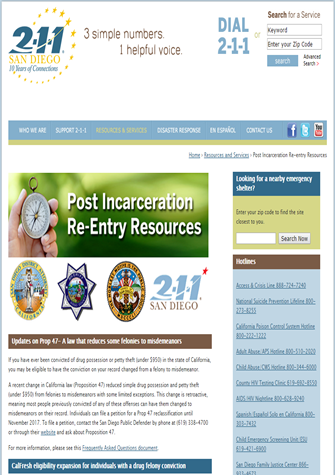Transition plans need to be written at a reading level the average incarcerated person can understand. Many of those in jail read between the fifth- and seventh-grade levels, so consider that when developing your transition plans.
An easy way to measure the readability of your reentry plans is to use the Flesch Reading Ease readability assessment software, available in Microsoft Word. The following directions explain how to access these readability statistics when using Microsoft Word 2007:
This section will help you create resource packets or guides to empower those incarcerated to use services while in jail and after release. You will also learn the best way to distribute the guides, including training for jail staff.
The development of a user-friendly county- or city-specific resource brochure, pamphlet, or pocket-size resource guide will help the returning population and their families understand the community resources available to meet their needs.
The content of resource brochures and guides ranges from listing the most important numbers and hotlines to providing a description of the challenges inmates face at release and helpful tips to manage them.
Resource packets are important for a number of reasons:
Following are 12 recommendations for the development of reentry guides:1
Benefit boards located throughout your facility and online community resource databases are easy and effective ways to share resources for those transitioning back to the community. The San Diego County District Attorney's office, San Diego County Sheriff's Department, San Diego County Probation Department, and San Diego Re-entry Roundtable developed in partnership 2-1-1 San Diego, a reentry section on the 2-1-1 website: http://www.211sandiego.org/Re-entry.
San Diego's 2-1-1 Post Incarceration Re-Entry Resources |
 |
Following are examples of different types of resource materials for people transitioning from jail and prison to the community.
1.Cuyahoga County, Ohio. 2011. Going Home to Stay: A Guide for Successful Reentry for Men and Women.
2. Davidson County, TN Sheriff’s Office. 2008. Reentry packet and information and referral guide.
3. Douglas County, KS. Reentry resource list with map and bus routes.
4. Howard County, MD. Howard County Probation reporting information sheet.
5. Douglas County Sheriff’s Office Corrections Division. Crisis Resource Card.
6. Fishman, Nancy and Jeff Mellow. 2008. Essex County Smart Book: A Resource Guide for Going Home will give you a better idea of information you may want to include in a resource guide.
7. Howard County, MD. Howard County Reentry Xpress session outline.
8. Orange County Sheriff’s Department Inmate Service Division. Client Release Guide: A guide to food, shelter & other emergency services in Orange County.
1 of 2 |
1Mellow and Dickenson, “The Role of Prerelease Handbooks for Prisoner Reentry,” Federal Probation 70 (2006): 70–76.